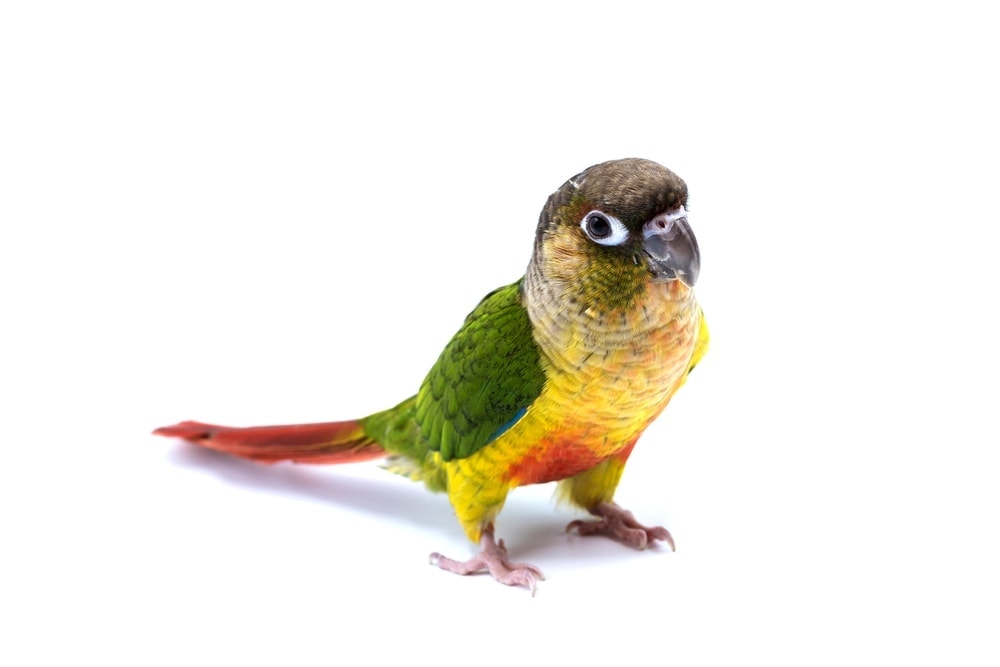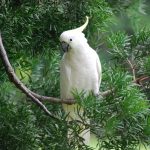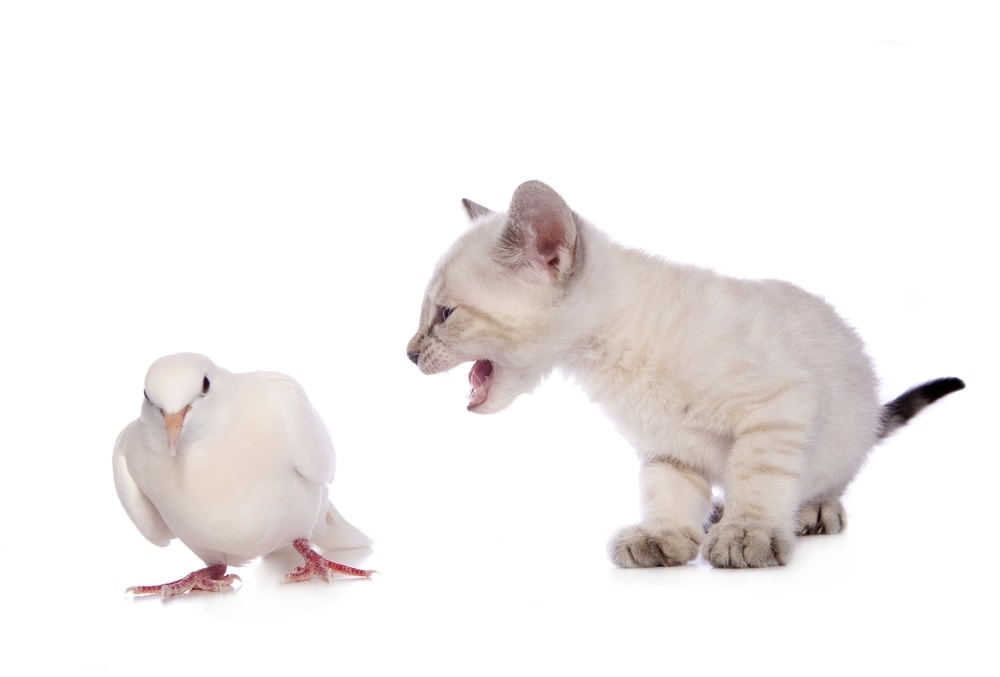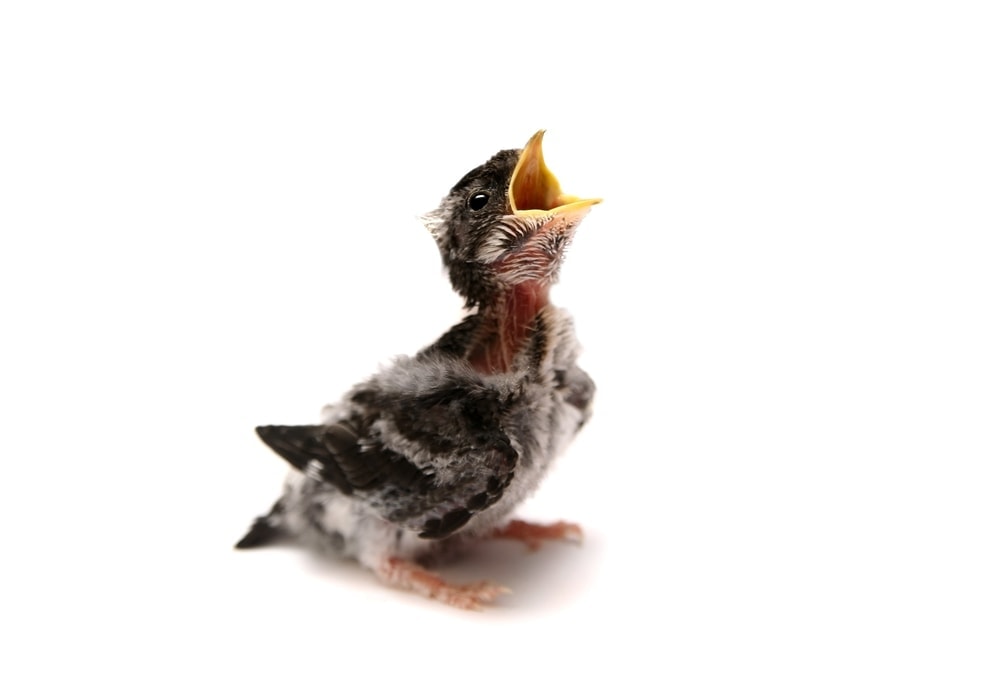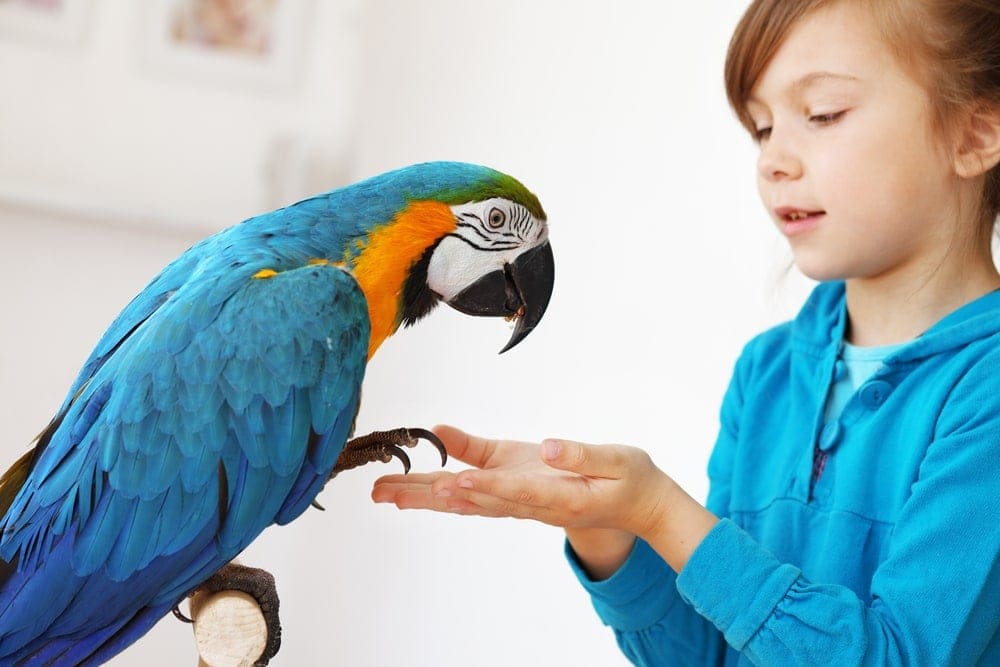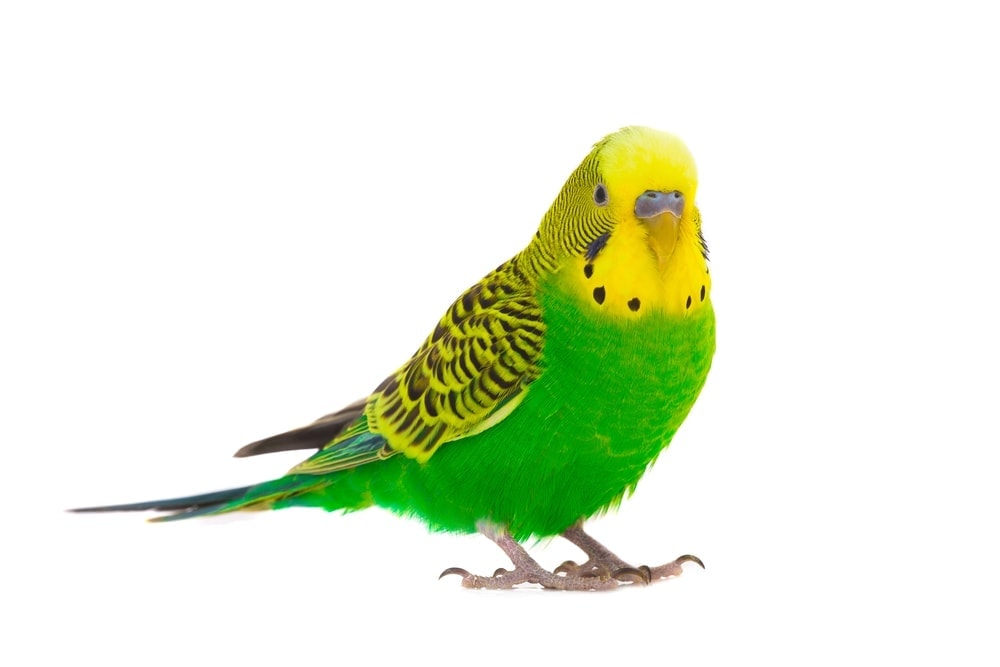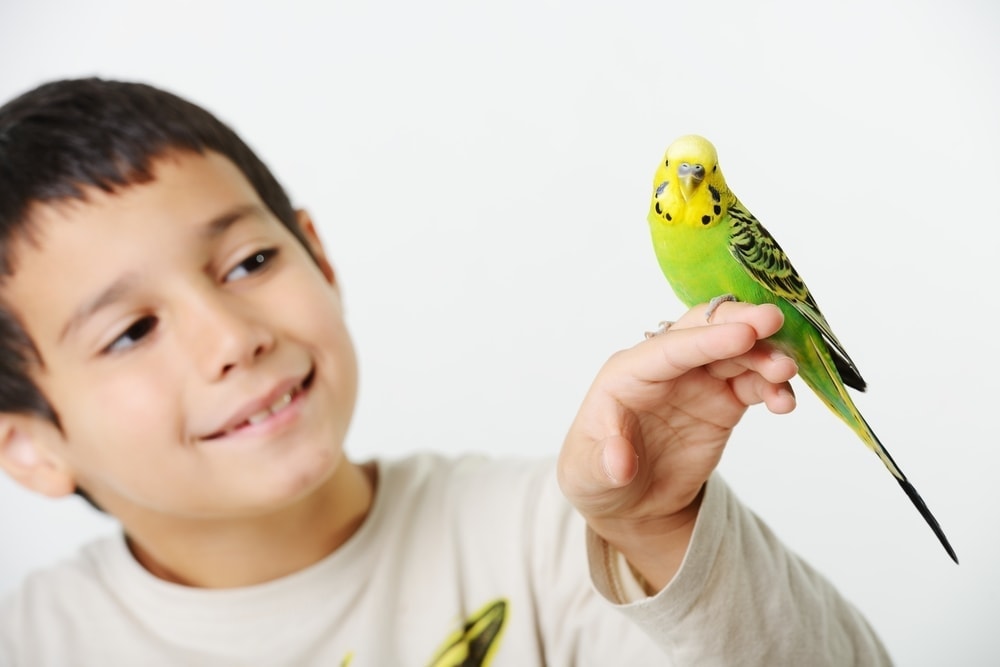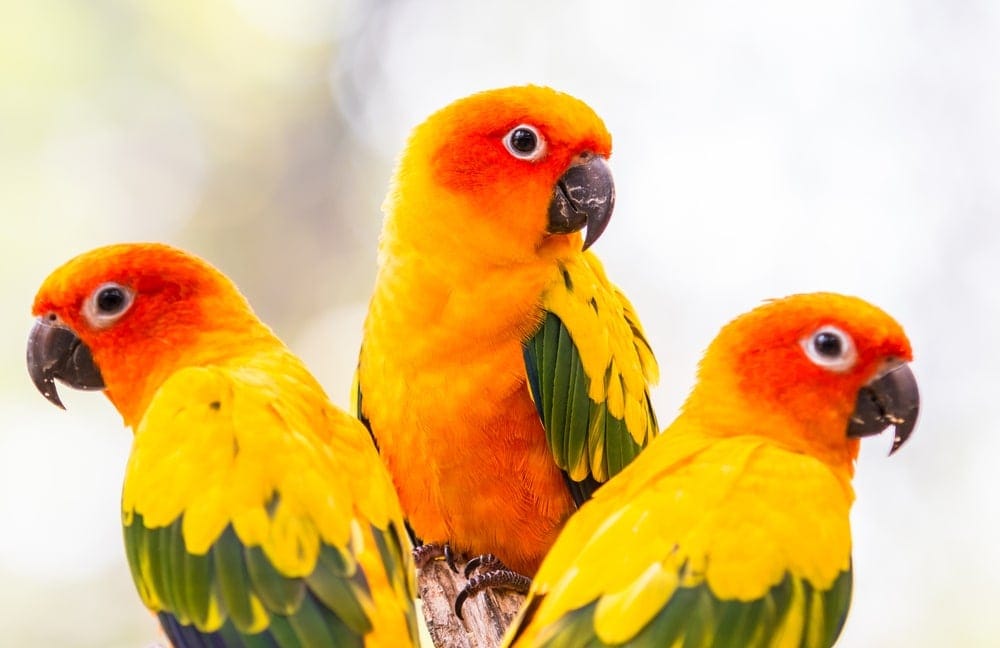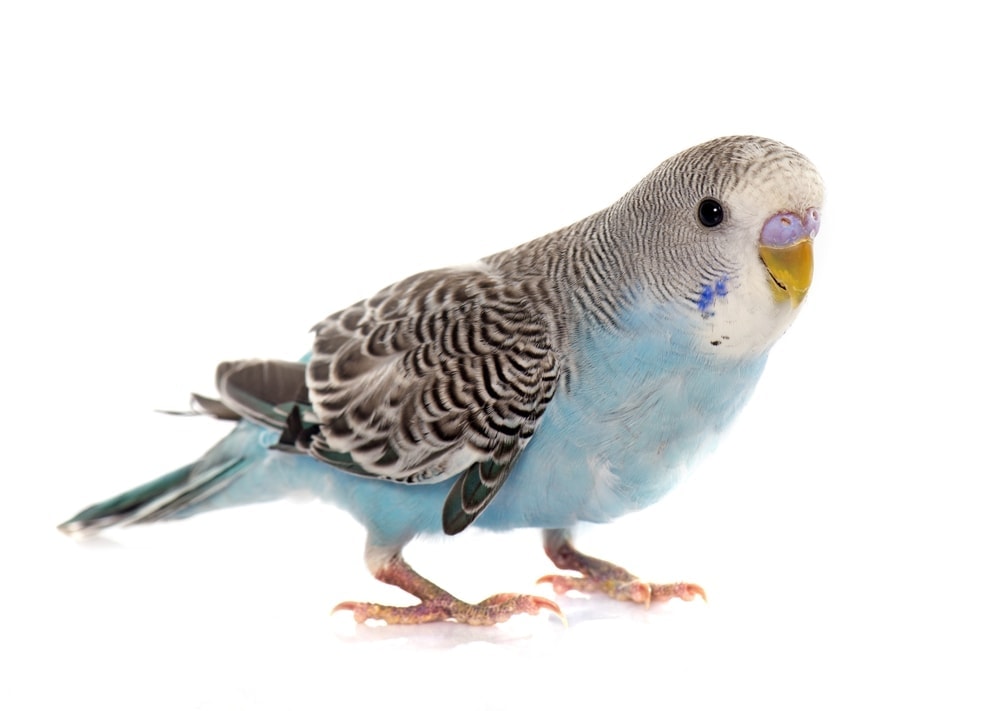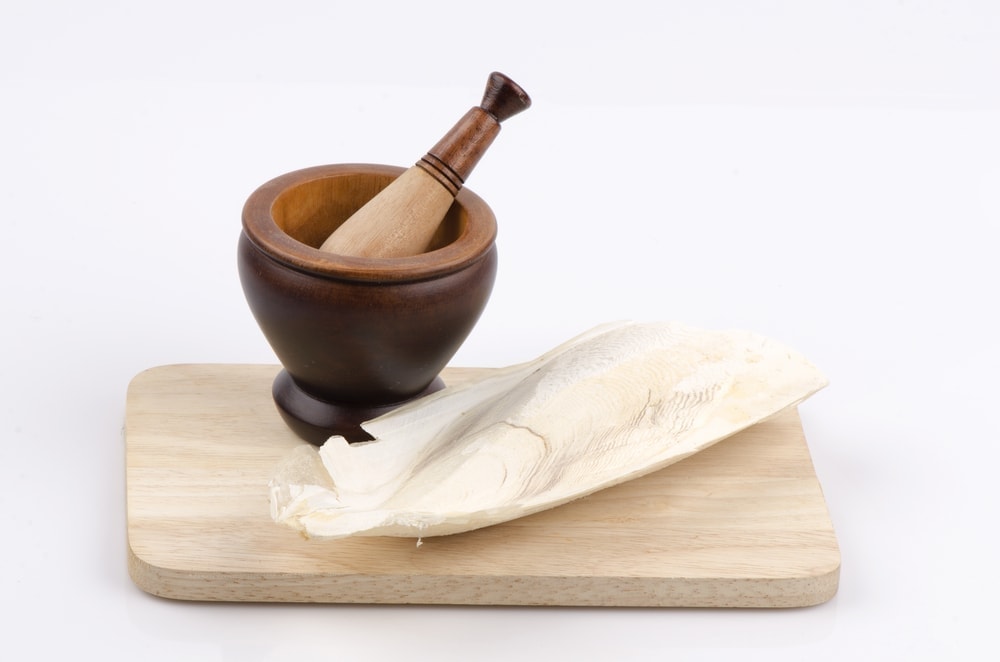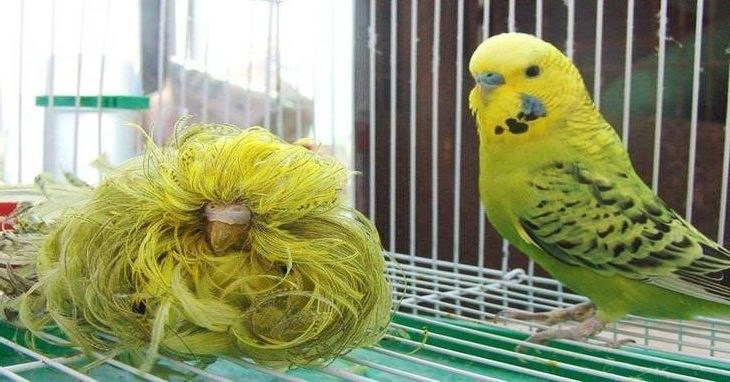The Green Cheeked Conure is a small bird with a lot of personality.
If you are looking for this type of pet, this is one you should definitely consider.
Appearance
This bird has a grey beak, green cheeks, white periophthmalmic rings, and a crown that is brown, black, and grey. The long tail of the conure has a dark red coloration. It also has splashes of red and yellow, making it quite a colorful creature.
The green cheeked conure has weigh anywhere from 60 to 80 grams on average, measuring around 26 centimeters or 10 inches long.
Green Cheeked Conure Lifespan
If properly taken care of, the green cheeked conure can live up to 30 years in captivity. Unfortunately, it has an average life expectancy of 10 years. This is due to the fact that many people who own this bird do not take very good care of it.
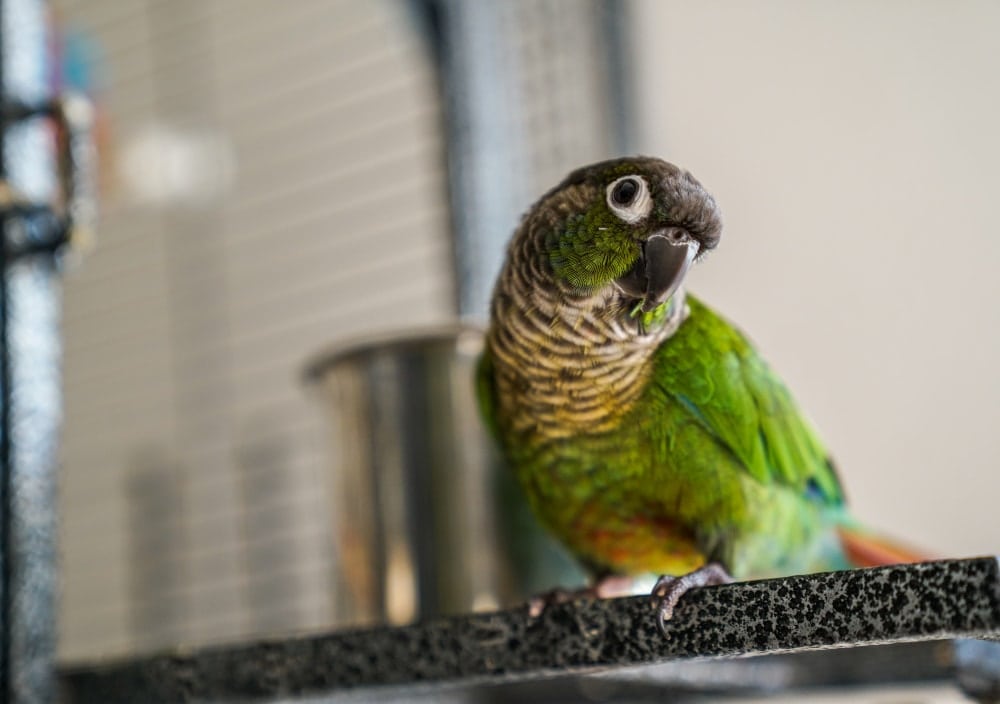
Types of Green Cheeked Conures
There is really only one type of green cheeked conure, but there are numerous varieties due to mutations from selective breeding.
Some of these variations include:
- American Dilute: This particular variety of the green cheeked conure has cream-colored feathers. It has dark eyes and feet, which make for a fairly stunning contrast.
- Yellow sided: These conures have a lighter shade of red on the tail, and a bright yellow chest.
- Cinnamon: There is also the cinnamon conure, which primarily consists of green. This bird does, however, have a tannish colored head that sets it apart from the others.
- Pineapple: This mutation makes for a very interesting look. The head of the bird is a light brown, while the sides are bright yellow. These birds are known for their red eyes.
- Turquoise: These birds are known for being larger than any other variety of the green cheeked conure. They have grey feathers on their chest and tail, but with mostly bluish green plumage.
The Green Cheeked Conure’s Personality
Green cheeked conures are known for being incredible social and affectionate. They can also be very vocal, which drive some owners crazy at times. If you live in an apartment, this could definitely be a problem.
These birds are not big talkers, but some of them care capable of learning a number of words and short phrases. If you are looking for a bird that will be chatty, this is definitely the wrong kind.
One of the things to keep in mind about green cheeked conures is that they can be a little cranky at times. This might lead you to believe that they are just mean birds, but you probably haven’t spent enough time with them.
The fact is that these birds really love interacting with people, but you need to know when to leave them alone. They are also known for being quite intelligent and learning quickly.
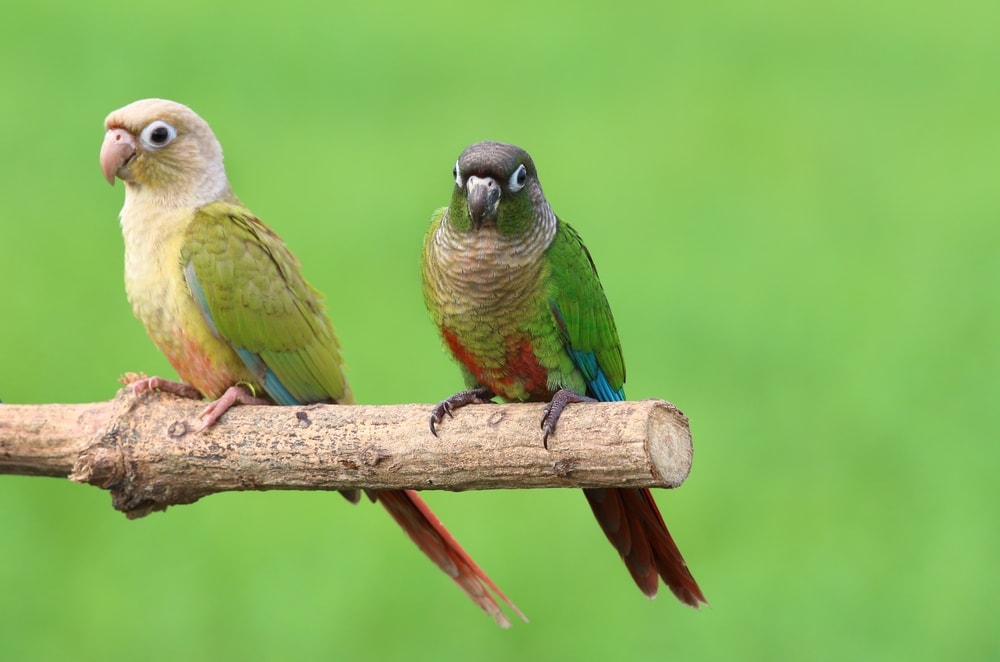
Natural Habitat
The green-cheeked conure comes from South America. There is a still a very large and thriving population of these birds in the densely wooded regions of Paraguay, Argentina, Bolivia, and Brazil.
They fly together in relatively small flocks that are made up of anywhere from 10 to 20 birds.
Green Cheeked Conure Care Guide
1. Green Cheeked Conure Diet
Green cheeked conures that are kept in captivity should have a diet similar to their wild brethren. This includes a combination of seeds, vegetables, fruits, and even insects. It is very important that you give your bird high quality pellets to keep it healthy.
Pellets should make up anywhere from 60-70% of your bird’s total diet. You can also give them the occasional fortified seeds and other foods mentioned above.
2. Environment
If you are going to keep one of these birds, you will need to have an appropriately sized cage. The enclosure should not be smaller than 25 square inches. Make sure that the bars on the cage are spaced one half inch apart.
Keep in mind that these birds tend to thrive when they are put together with another green cheeked conure. It is not a good idea to put a bird of a different species in with one of these though.
3. Common Health Problems
These birds can develop problems with picking at their feathers, as they can become bored quite easily. This is why it is important for you to keep some toys in their cage at all times.
Conures are particularly vulnerable to Psittacine Beak and Feather Disease, Aspergillosis, and Psittacosis. You can avoid serious health problems with your bird by simply taking it to the vet for regular checkups.
4. Grooming
You should provide your green cheeked conure with a bowl of water to bathe in every couple of days. These birds are known for their love of bathing, so it is crucial that you do this. It will help to keep your pet clean and even avoid certain health issues.
You can buy one or two rough perches for your bird so that clipping their nails is not necessary. These perches will ensure that your bird’s nails don’t become overly sharp.
5. Exercise
Green cheeked conures need a good amount of physical activity and stimulation. You should therefore try to spend a couple of hours each day with your bird out of the cage. Just make sure that you keep a close eye on it the whole time. This will serve to keep your bird happy and healthy.
Green Cheeked Conure Price
You can expect to pay around $350 for a green-cheeked conure, though some of them do cost significantly more.
The Turquoise, Yellow Sided and Pineapple mutations of this bird can cost anywhere from $500 to almost $1,000. The bird’s age and overall health are two other factors that can have a big impact on how much you pay.
Conclusion
- Green cheeked conures can live up to 30 years but have an average life expectancy of about a decade.
- There are lots of different mutations of these birds that offer a unique color pattern.
- These birds can be fairly noisy and are not great for apartments.
- A balanced diet of seeds, fruits, vegetables and insects will keep your bird healthy over the long term.
- Make sure that you get a cage for your conure that is at least 25 square feet overall.
- These birds require regular activity and stimulation, but it is important to keep a close eye on them when they are out of the cage.
